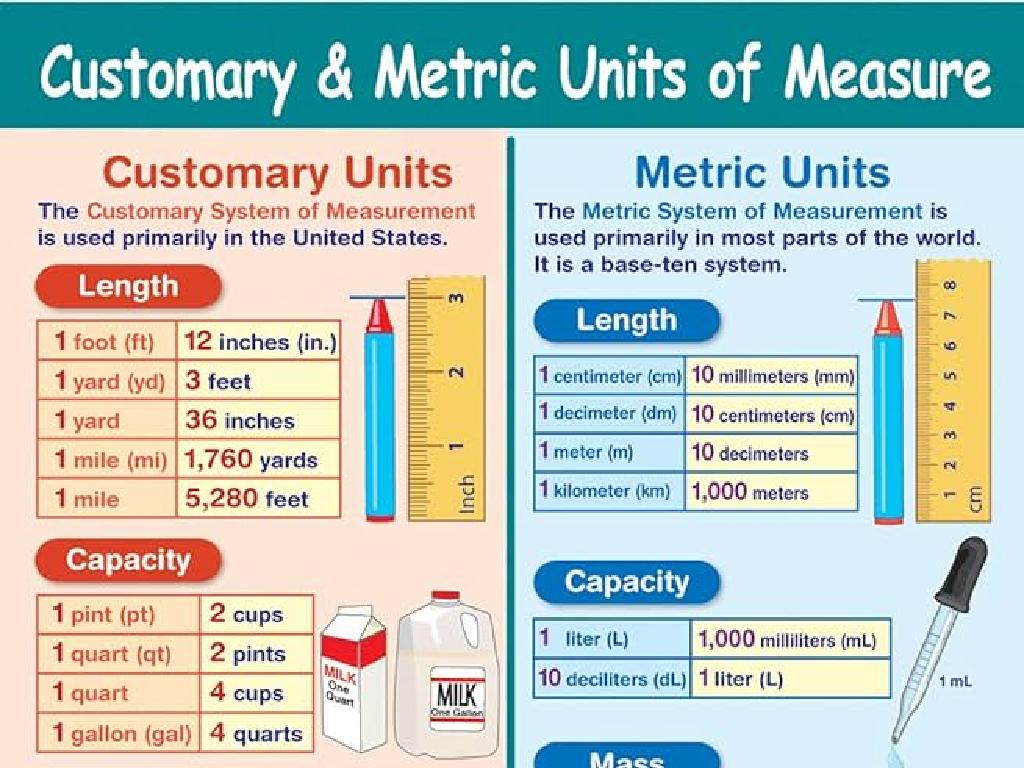Identify And Select Countries Of Europe: Region 4
Subject: Social studies
Grade: Seventh grade
Topic: Europe: Geography
Please LOG IN to download the presentation. Access is available to registered users only.
View More Content
Exploring Europe: Region 4
– Europe’s diverse geography
– The concept of regions
– Regions help categorize areas with similar features
– Focus on Region 4
– Region 4 includes countries like Hungary, Poland, Czech Republic
– Characteristics of Region 4
– Look at language, culture, and physical geography
|
This slide introduces students to the geography of Europe, emphasizing the diversity of the continent. It explains the concept of regions, which are areas that are grouped together based on common characteristics such as culture, language, and geographical features. Today’s lesson will focus on Region 4, which includes Central European countries. Students should understand that these regions are not strictly defined by political borders but by similarities shared among the countries. Encourage students to explore the unique characteristics of Region 4, including major languages spoken, cultural practices, and the physical landscape. This will help them appreciate the variety within Europe and understand how geographers categorize different parts of the world.
Understanding Regions in Geography
– Define a geographical region
– An area with distinct features, like climate or culture
– Characteristics defining a region
– Common language, history, or climate can define a region
– Regions: Global examples
– The Sahara, Amazon Basin, and the Midwest
– Europe’s regional divisions
– Europe is divided into several regions, including Region 4
|
This slide introduces the concept of a geographical region, which is a segment of land identifiable by unique characteristics that distinguish it from other areas. These characteristics can be physical, such as climate and topography, or cultural, including language and history. Provide global examples like the Sahara Desert, known for its arid climate, the Amazon Basin for its biodiversity, and the Midwest of the United States for its agricultural prominence. Relate this back to Europe, explaining that it is divided into various regions for easier study and understanding, with Region 4 being one of these. Encourage students to think about what might define a region closer to home, and how regions can vary in size and significance.
Exploring Europe: Region 4
– Locate Region 4 countries
– Use a map to identify countries like Hungary, Romania, and Bulgaria.
– Geographical features of Region 4
– Mountains, rivers, and climate patterns shape Region 4.
– Cultural significance in Region 4
– Explore languages, traditions, and historical sites.
– Political landscape of Region 4
– Understand the government systems and international relations.
|
This slide aims to provide an overview of Europe’s Region 4, focusing on identification of countries, geographical features, cultural, and political aspects. Students should use maps to locate countries such as Hungary, Romania, and Bulgaria, noting their position in Europe. Discuss the Carpathian Mountains, the Danube River, and the diverse climate across the region. Highlight the rich cultural heritage, including languages spoken, traditional festivals, and significant historical landmarks. Lastly, delve into the political structure of these countries, their role in the European Union, and their relationships with neighboring nations. Encourage students to think about how geography influences culture and politics.
Physical Geography of Europe: Region 4
– Region 4’s mountains and rivers
– Explore the Alps, Danube River, and more
– Climate and natural resources
– Discuss temperate climates, forests, and minerals
– Geography’s impact on life
– How do landforms influence settlement and jobs?
– Case study: Human adaptation
– Example: Alpine farming and Rhine navigation
|
This slide aims to explore the physical geography of Europe’s Region 4, focusing on its mountains, rivers, and other significant landforms. Discuss the temperate climate and the variety of natural resources available, such as forests and minerals. Highlight how the physical geography has historically affected and continues to influence human activities, including settlement patterns, economic activities, and cultural practices. Use case studies to illustrate how people have adapted to and utilized the geography for their benefit, such as farming techniques suitable for mountainous regions and the use of rivers for transportation and trade. Encourage students to think critically about the relationship between geography and human development.
Cultural Highlights of Europe: Region 4
– Diverse languages in Region 4
– Explore the linguistic variety, such as French, German, Italian.
– Festivals and traditions
– Discover celebrations like Oktoberfest in Germany, Bastille Day in France.
– Region 4’s cuisine
– Taste unique dishes like Swiss fondue, Belgian waffles.
– Landmarks and attractions
– Visit the Eiffel Tower, Neuschwanstein Castle, and the Colosseum.
|
This slide aims to give students a glimpse into the rich cultural tapestry of Europe’s Region 4. Emphasize the importance of language as a cultural identifier and introduce students to the major languages spoken in this region. Highlight key festivals and traditions that reflect the historical and cultural significance of the area. Discuss the diverse culinary landscape, encouraging students to think about how geography and history shape regional cuisine. Lastly, showcase famous historical landmarks and modern attractions, explaining their relevance and encouraging students to research more about them. This will help students appreciate the cultural diversity and historical depth of Europe’s Region 4.
Exploring Europe: Region 4’s Political Landscape
– Countries and capitals in Region 4
– Learn the names and locations of key countries like Hungary (Budapest), Czech Republic (Prague).
– Overview of government systems
– Parliamentary, presidential systems, and more.
– Region 4’s political history
– Historical events that shaped the politics, such as the fall of communism.
– Current events and relations
– How do current events affect international dynamics? E.g., EU policies.
|
This slide aims to provide students with a comprehensive understanding of the political aspects of European Region 4. Start by familiarizing them with the countries and their capitals, ensuring they can identify them on a map. Discuss the different types of government systems present in this region, such as parliamentary democracies, and touch upon significant historical events that have influenced the current political landscape, like the impact of the Cold War. Conclude with a discussion on current events, such as the role of the European Union, to highlight the importance of international relations. Encourage students to follow news stories from this region to understand the dynamic nature of politics.
Economic Overview of Europe: Region 4
– Major industries in Region 4
– Agriculture, manufacturing, and tourism are key sectors.
– Trade and commerce dynamics
– Region 4 engages in trade with EU members and globally.
– Economic challenges faced
– Issues include unemployment and economic disparity.
– Opportunities for growth
– Innovation and green energy present growth potential.
|
This slide provides an overview of the economic landscape in Europe’s Region 4. It’s important to highlight the diversity of major industries, such as agriculture, which might include wine production in France and olive oil in Italy; manufacturing, including German automobile production; and tourism, with landmarks like the Eiffel Tower and Colosseum. Discuss the trade agreements within the EU and with other countries, emphasizing the benefits and complexities of such relationships. Address the economic challenges that the region faces, like unemployment rates in Spain and Greece, and the wealth gap between Western and Eastern European countries. Lastly, explore the opportunities that lie ahead, particularly in the fields of technology, renewable energy, and sustainable practices, which could drive future economic growth. Encourage students to think about how these factors interplay and affect the lives of citizens in these countries.
Class Activity: Exploring Europe’s Region 4
– Form groups for research
– Select a Region 4 country
– Choose from countries like Hungary, Czech Republic, Slovakia, or Poland
– Create a country poster
– Include maps, cultural symbols, and economic facts
– Present your findings
|
This activity is designed to engage students with the geography, culture, and economy of countries in Europe’s Region 4. Divide the class into small groups and assign or let them choose a country from Region 4, which includes nations such as Hungary, Czech Republic, Slovakia, and Poland. Each group will research their selected country and create a poster that highlights key geographical features, cultural elements, and economic information. Encourage creativity and the use of various resources like the internet, books, and encyclopedias. Once completed, each group will present their poster to the class, explaining their findings and educating their peers. This activity promotes teamwork, research skills, and public speaking. Possible variations include focusing on historical landmarks, famous personalities, or traditional cuisine.





